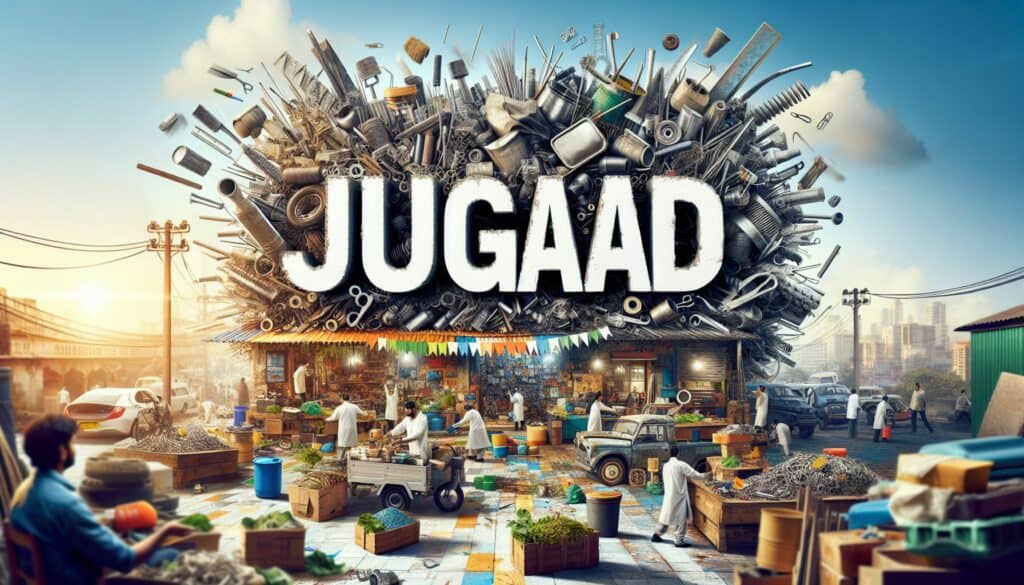To achieve innovative and frugal solutions to problems by using limited resources creatividadely and resourcefully. It emphasizes improvisation and ingenuity.
- المنهجيات: الهندسة, الجودة
جوقاد

جوقاد
- المنهجية الرشيقة, التحسين المستمر, التفكير التصميمي, الابتكار المقتصد, التصنيع اللين, تقنيات حل المشكلات, المنتجات الموفرة للموارد, ممارسات الاستدامة, تصميم يركز على المستخدم
الهدف:
كيفية استخدامه:
- Identify a pressing problem, think simply and flexibly, leverage existing resources in unconventional ways, include the margin (target underserved populations), and follow your heart (passion-driven innovation). It often involves "making do" with what's available.
الايجابيات
- Cost-effective, promotes resourcefulness and sustainability, rapid problem-solving, fosters innovation in resource-constrained environments, highly adaptable.
سلبيات
- Solutions might lack scalability or long-term robustness, may overlook safety or quality standards if not carefully managed, can be difficult to replicate systematically, intellectual property protection can be challenging.
الفئات:
- الاقتصاد, الأفكار, حل المشكلات, تصميم المنتج
الأفضل لـ
- Developing quick, cost-effective solutions in resource-scarce environments, particularly for addressing immediate needs or for bottom-of-the-pyramid markets.
جوجاد is frequently observed in sectors such as healthcare, agriculture, education, and energy, where rapid solutions are necessary under tight budgetary constraints. This methodology is particularly applicable during the ideation and prototyping phases of product development, where teams can experiment and innovate in iterative cycles. Stakeholders typically include local entrepreneurs, community leaders, and engineers who understand the pressing needs of their environment. For instance, in rural healthcare, a simple adaptation of local materials may yield low-cost medical devices tailored to specific ailments prevalent in underserved populations. In agriculture, Jugaad can lead to innovative irrigation systems that utilize repurposed containers or recycled materials, thereby enhancing water efficiency and crop yields for small-scale farmers. The ability to be resourceful and adaptive allows for the rapid creation of prototypes which can be tested and refined based on real-world feedback, ensuring that solutions remain relevant and effective. Such an approach encourages inclusive innovation, as it inherently seeks to address the gaps in services and products for lower-income communities, turning obstacles into opportunities and leveraging local knowledge and resources.
الخطوات الرئيسية لهذه المنهجية
- Identify an immediate and pressing problem that requires a solution.
- Think simply and flexibly, breaking down the problem into manageable parts.
- Leverage existing resources creatively, using what's available in innovative ways.
- Consider the margins and target underserved populations with your solutions.
- Follow your passion, allowing personal motivations to guide the innovation process.
نصائح للمحترفين
- Engage with local communities to better understand their pain points and resource constraints, leading to more relevant solutions.
- Prototype rapidly using inexpensive materials and tools, iterating designs based on immediate feedback and usability testing.
- Form cross-disciplinary teams that bring diverse perspectives to problem-solving, enhancing creativity and unconventional resource utilization.
لقراءة عدة منهجيات ومقارنتها, نوصي باستخدام
> مستودع المنهجيات الشامل <
مع أكثر من 400 منهجية أخرى.
نرحب بتعليقاتكم على هذه المنهجية أو المعلومات الإضافية على قسم التعليقات أدناه ↓، وكذلك أي أفكار أو روابط متعلقة بالهندسة.
السياق التاريخي
1949
1950
1950
1960
1960
1960
1960
1940
1950
1950
1958
1960
1960
1960
1960
(إذا كان التاريخ غير معروف أو غير ذي صلة، على سبيل المثال "ميكانيكا الموائع"، يتم تقديم تقدير تقريبي لظهوره الملحوظ)















منشورات ذات صلة
جدول الإنتاج الرئيسي (MPS)
التخصيص الشامل
قمع التسويق
التدقيق التسويقي
مؤشر MAPO (حركة ومساعدة مرضى المستشفيات)
تخطيط موارد التصنيع (MRP II)